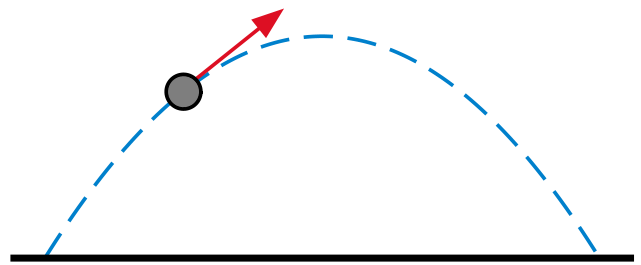Projectile Speed and Momentum
A launching mechanism shoots out a ball with an initial velocity V and at an angle of θ with respect to the horizontal. As the ball reaches a maximum height of its parabolic trajectory, it explodes into two pieces of equal masses. One of these pieces retraces its path back to its launching point. What is the velocity of the other piece right after the explosion?

This section requires Javascript.
You are seeing this because something didn't load right. We suggest you, (a) try
refreshing the page, (b) enabling javascript if it is disabled on your browser and,
finally, (c)
loading the
non-javascript version of this page
. We're sorry about the hassle.
2 solutions
p m ( V cos θ ) 2 1 m v 2 v 2 v 2 = p 1 + p 2 = ( 2 1 m ) ( − V cos θ ) + ( 2 1 m ) v 2 = m V cos θ + 2 1 m V cos θ = 2 1 m 2 3 m V cos θ = 3 V cos θ
This question can be solved easily by taking into account the conservation of momentum along the horizontal plane. The center of mass of the system will continue to accelerate due to the force of gravity acting down on it, however, it will not accelerate right or left. This is because there are no forces acting on it in the horizontal plane and since it is already in motion it will stay in motion at constant horizontal speed throughout the whole trip.
Now we have the following setup for the situation at the maximum point above by assuming the mass of the projectile to be 2 m ,
2 m V c o s θ = − m V c o s θ + m v 2 x
The velocity of a piece can be of the same magnitude after the collision in this case because that piece is retracing the exact path that it was taking before the explosion. This it would have a velocity of the same magnitude but opposite direction. However, to keep the law conserved, the velocity of the second piece cannot stay the same. Therefore we can rearrange the above setup to get the velocity of the piece right after the collision.
( 2 m V c o s θ + m V c o s θ ) / m = v 2 x
2 V c o s θ + V c o s θ = v 2 x
Therefore, the velocity of the piece of mass right after the explosion would be,
v 2 = 3 V c o s θ